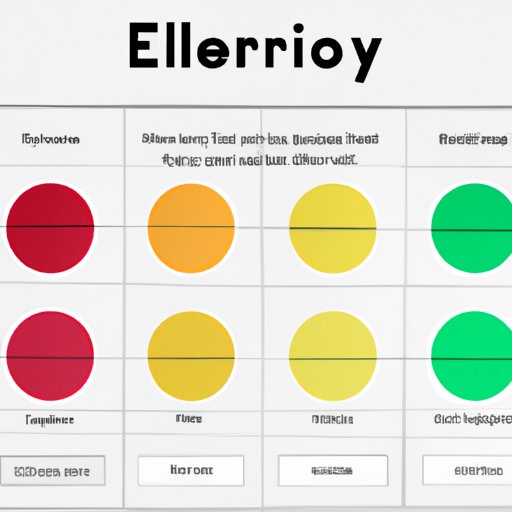Introduction
Mental health is an essential part of overall health and wellbeing. One way to monitor and manage your mental health is by creating an emotional self-awareness chart. Also known as a “how are you feeling” chart, this tool can help you identify and express your emotions in a visual way. In this article, we will explore the benefits of using a feeling chart for mental health and provide guidance on how to create and use one.
Creating an Emotional Self-Awareness Chart
When used properly, a feeling chart can be an effective way to identify, understand, and express your emotions. The goal is to create a visual representation of your current emotional state. This can be done with a number of different formats, such as a wheel or graph.
To craft a personalized feeling chart, start by brainstorming a list of emotions that you typically experience. Be sure to include both positive and negative feelings. Once you have identified a range of emotions, look for patterns in the words that you’ve chosen. For example, if you wrote down “happy,” “content,” “satisfied,” and “joyful,” they could all be grouped together under the umbrella term “positive emotions.”
Next, decide how you want to visually represent your emotions. You can draw a wheel or graph, or you can find templates online. If you choose to make your own chart, be sure to include a key so that you can easily identify each emotion.
Utilizing a How Are You Feeling Chart to Improve Mental Health
Once you have created your feeling chart, you can begin to use it to monitor and manage your mental health. There are several potential benefits, including stress management and improved communication.
For instance, a feeling chart can be a useful tool for stress management. By identifying how you’re feeling, you can take proactive steps to manage your stress levels. This can be as simple as taking a break or engaging in a calming activity.
In addition to stress management, a feeling chart can also help you to better communicate your emotions. By having a visual representation of your emotions, you can more easily explain how you’re feeling to others. This can lead to more meaningful conversations and more effective problem solving.

Exploring the Different Types of Feeling Charts
There are many different types of feeling charts, each with its own advantages and disadvantages. Some of the most popular types include:
- Radial charts – These charts feature a wheel design with each emotion represented by a wedge.
- Linear charts – Linear charts feature a line with each emotion represented by a dot or other marker.
- Bar graphs – Bar graphs are similar to linear charts, but each emotion is represented by a bar instead of a dot.
- Emotion thermometers – Emotion thermometers feature a scale with each emotion represented by a temperature.
Examples of each type of chart can be found online. It’s important to find the format that works best for you. Some people may prefer a radial chart, while others may find a linear chart more intuitive. Experiment with different types to determine which one suits your needs.
Conclusion
A feeling chart is a powerful tool for improving mental health. By visually representing your emotions, you can gain a greater understanding of your internal state. This can help with stress management and enhance communication. There are many different types of feeling charts, so experiment to find the one that works best for you. With a little practice, you can use a feeling chart to improve your mental health.
(Note: Is this article not meeting your expectations? Do you have knowledge or insights to share? Unlock new opportunities and expand your reach by joining our authors team. Click Registration to join us and share your expertise with our readers.)
